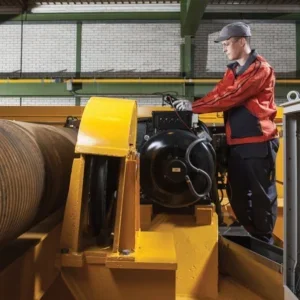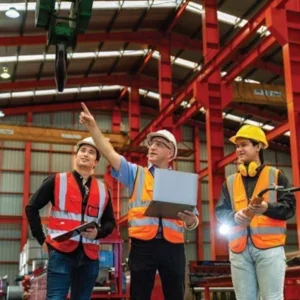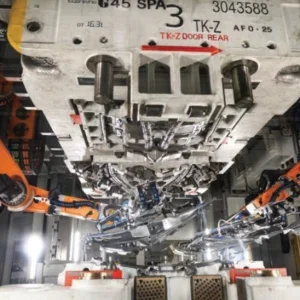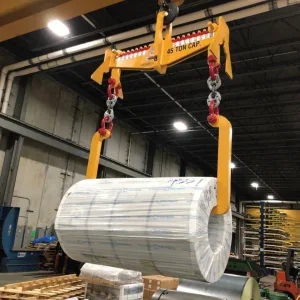Visko Oy is a Finnish company in the food industry and specialises in, among other things, manufacturing skins for sausages. Its factory is in the town of Hanko. Workers in the warehouse, many of them women, are employed filling packing cases with heavy rolls. But leaning into the large boxes led to many of them getting back and shoulder aches and pains. In 1998 Visko looked around for some kind of device to take the strain out of packing and the chosen solution was one of the very first Ergolator ergonomic lifting devices supplied by Erikkilä Nostotekniikkaa Oy. Today Visko has two Ergolators.
According to Visko’s maintenance director, Bernt Sundberg, the request for a lifting device came from the workers themselves. After investigating different options, an Ergolator was the only lifting device on the market that could be found to meet its needs and lift rolls directly into a box over high edges.
One of the women in the warehouse, Eija Väisänen, explains the problems they used to have: “Previously the lifting of the rolls was done by hand, with your back bent. The work was heavy and your shoulders and back got sore.” Her colleague Riitta Hautalan says that since the mechanical handling aid was introduced shoulder and backache complaints have disappeared. She says that all the workers soon got used to operating it.
The Ergolator is designed for handling light loads from 15kg to 200kg. It is light, being made of aluminium, and runs on a crane rail system.
Technical Operation of the Ergolator is via an ergonomically designed manual control unit that includes the steering bars, a swinging single hand switch for stepless up/down movements, and the controls for the gripper. The complete control is mounted via a bearing to a vertical rail and it is balanced.
The electric hoist is suspended from a Prosystem light crane system, where the power needed for the horizontal movement is only 1% of the total mass of the machinery. A gripper designed specifically for each application is attached to the vertical rail. Grippers for different kinds of paper and plastic rolls, wire and cable drums are standardised. Other applications are plastic boxes and trays, and cylindrical objects such as gas bottles or machined steel bars.
A feature of the Ergolator is that the gripper can go into, for example, a box with sides that are up to 1.5m high. Because the controller stays outside the box, the user does not have to bend at all during the work.
Erikkilä Nostotekniikkaa says that operating the Ergolator can be likened to driving a car, except that instead of front wheels there is the gripper to pick up the load.
The connection between the control and the gripper tool is 100% mechanical and the gripper moves up and down on the rail while the control stays at the height chosen by the user. This is to ensure accurate handling of the load when placing it into, for example, a packing case or a machine.






